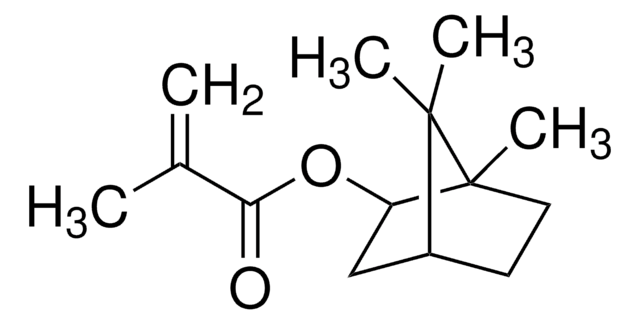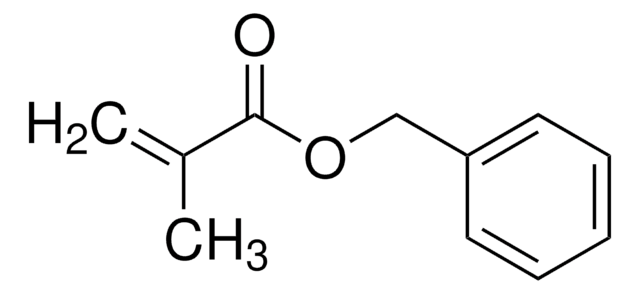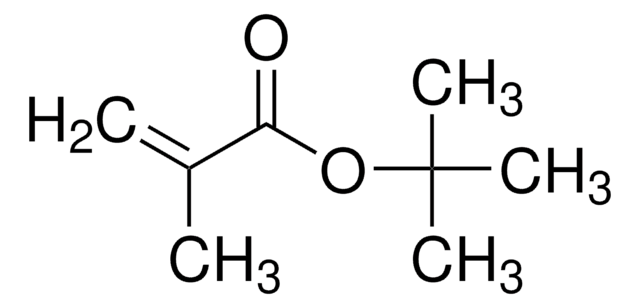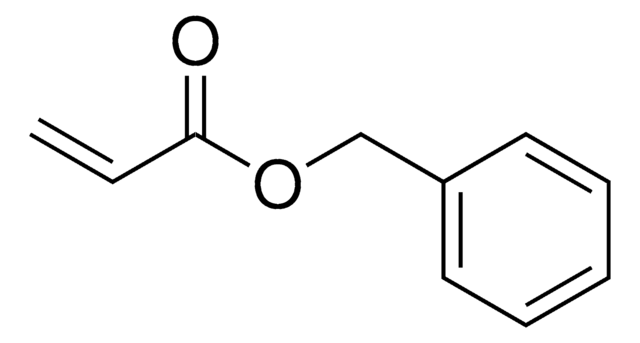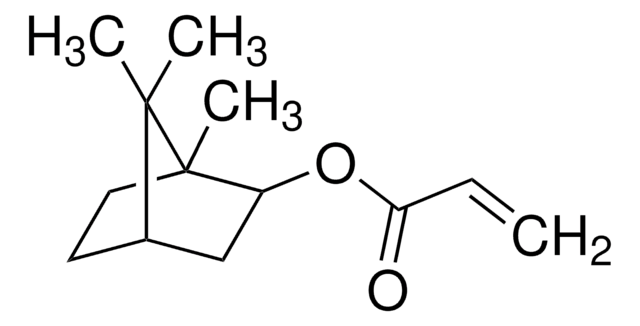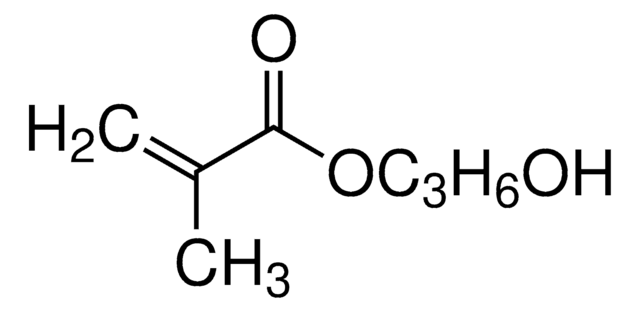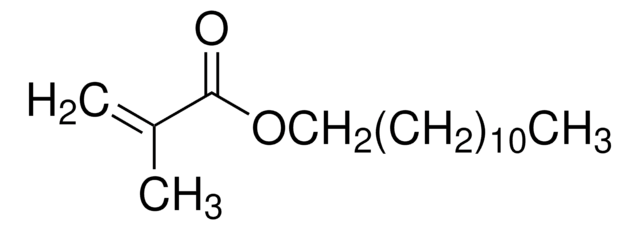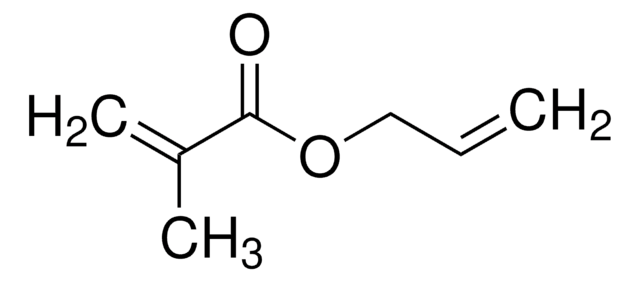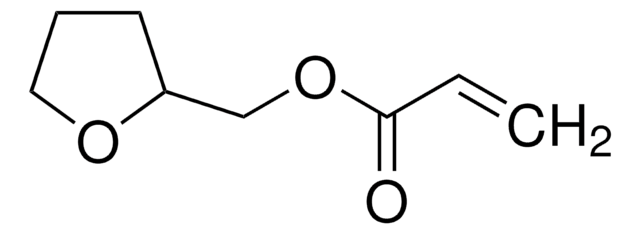408964
Cyclohexyl methacrylate
≥97%, contains ~60 ppm monomethyl ether hydroquinone as inhibitor
Synonym(s):
Methacrylic acid cyclohexyl ester
About This Item
Recommended Products
Quality Level
assay
≥97%
form
liquid
contains
~60 ppm monomethyl ether hydroquinone as inhibitor
refractive index
n20/D 1.458 (lit.)
bp
68-70 °C/4 mmHg (lit.)
density
0.964 g/mL at 25 °C (lit.)
SMILES string
CC(=C)C(=O)OC1CCCCC1
InChI
1S/C10H16O2/c1-8(2)10(11)12-9-6-4-3-5-7-9/h9H,1,3-7H2,2H3
InChI key
OIWOHHBRDFKZNC-UHFFFAOYSA-N
Looking for similar products? Visit Product Comparison Guide
Related Categories
General description
Application
- As a monomer to prepare poly(cyclohexyl methacrylate) (PCHMA) thin films for high-performance luminescent solar concentrators(LSCs). These LSCs can be used to fabricate high-quantum yield photovoltaic solar cells.
- As a comonomer to prepare photo-patternable quantum dot-acrylate resins for fabricating light-emitting diodes with high color transparency.
- As a monomer to synthesizesuperhydrophobic silica nanoparticle surfaces for various applications such as anti-corrosionsurfaces, drag reduction, and energy conservation.
signalword
Warning
hcodes
Hazard Classifications
Eye Irrit. 2 - Skin Irrit. 2 - Skin Sens. 1 - STOT SE 3
target_organs
Respiratory system
Storage Class
10 - Combustible liquids
wgk_germany
WGK 1
flash_point_f
181.4 °F
flash_point_c
83 °C
ppe
Eyeshields, Gloves, type ABEK (EN14387) respirator filter
Choose from one of the most recent versions:
Already Own This Product?
Find documentation for the products that you have recently purchased in the Document Library.
Customers Also Viewed
Our team of scientists has experience in all areas of research including Life Science, Material Science, Chemical Synthesis, Chromatography, Analytical and many others.
Contact Technical Service